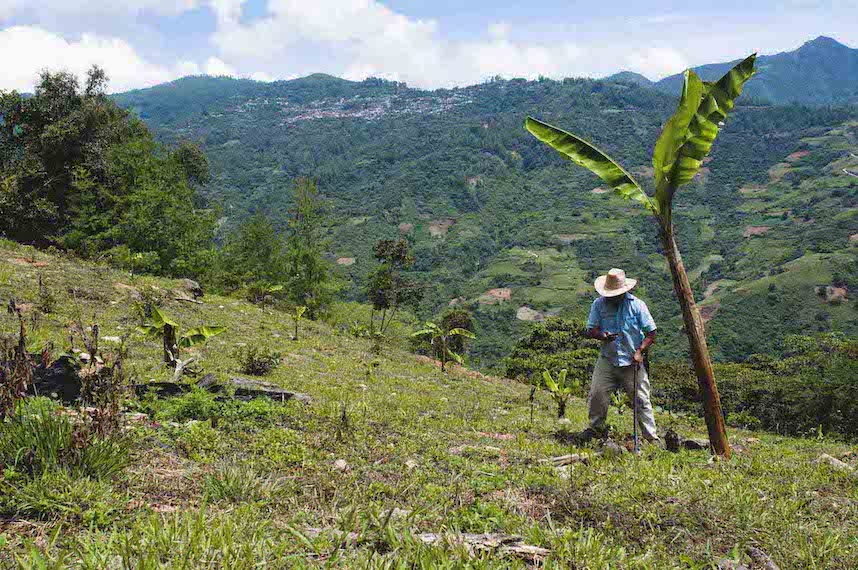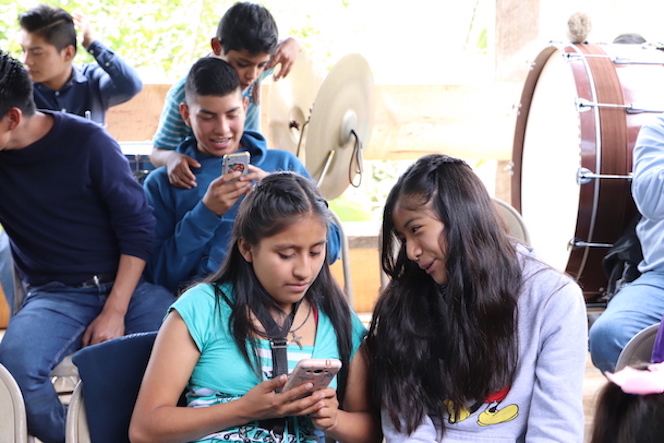Right now, many of us are reevaluating what it means to be connected. In the United States, we often think of connectivity as having wireless broadband service, or 5G mobile access. Our minds might conjure up images of Big Tech and Silicon Valley, where I teach. That’s especially understandable in a time of quarantines, social distancing, virtual schooling, and working from home. But the coronavirus pandemic has also prompted reflection on the salience of humanconnections, as we find ourselves suddenly separated from those we love—or else cooped up at home with them, day in and day out.
My book, Connected: How a Mexican Village Built Its Own Cell Phone Network, takes a closer look at connectedness and connectivity through the story of Talea de Castro, a remote pueblo in the southern Mexican state of Oaxaca, nestled high in the mountains of the Sierra Madre Oriental. Against all odds, the people of Talea creatively wired themselves to the outside world using the magic of mobile technology. Their experiences hold a much broader lesson about the cultural significance of being connected.

A campesino answers a phone call while farming on his corn field. Talea de Castro appears in the distance. Photo by Augustine Sacha.
Building a Network
For years, indigenous Zapotec villagers had petitioned telecom companies and government officials to provide them with cell phone service, but they were either ignored or turned down. Then, in 2012 and 2013, they finally succeeded in obtaining and installing a local, community-based system with help from Rhizomatica—a Mexican NGO whose founders named the organization after the work of Deleuze and Guattari—and a ragtag team of European hackers. At the heart of the system was a base transceiver station, or BTS, built by Range Networks, a Silicon Valley firm specializing in low-cost mobile networks. Rhizomatica’s hackers developed a custom interface using open-source software that allowed Taleans to operate the system using an off-the-shelf desktop computer. Villagers mounted the BTS antenna near the center of town for maximum coverage. Instead of hiring outsiders to do it, authorities employed a centuries-old form of obligatory communal work known as tequio that requires citizens to provide labor for public works projects.
The new network used VoIP (Voice over Internet Protocol) technology to transmit messages and data, and it was astonishingly inexpensive: local calls and texts were free. Long-distance and international calls now cost a small fraction of what villagers had been forced to pay for unreliable land lines installed in a phone kiosk. Villagers became global celebrities overnight, as outlets like BBC News, New York magazine, USA Today, and Wired reported their herculean accomplishments.
Although there were minor technical glitches in the system, it worked well—at least until Movistar, one of Mexico’s three telecom giants, muscled its way into Talea several years later. By 2019, most villagers dropped the community-based network and instead subscribed to Movistar, mainly because the company promised to provide mobile data services, such as internet and email access via smartphones. To make matters worse, some villagers and political officials claimed that Talea’s community cell phone system was being mismanaged by a young couple who played a leading role in bringing the technology to the village. Their detractors accused them of financial corruption and political ambition. Despite this, locally-based VoIP mobile technology has continued spreading across the region under the auspices of Telecomunicaciones Indígenas Comunitarias, a civil society organization created to support indigenous communities seeking to connect themselves to the network. Today it ties together more than 70 Mexican pueblos, serving approximately 4000 users—and it’s still growing.
Innovation from the Bottom Up
Community-based telecom systems are a dramatic example of how indigenous peoples are harnessing twenty-first century technologies to reinforce values passed along from generation to generation. Across Latin America, pueblos are using the internet and social media to communicate with each other over long distances, broadcast and archive cultural events, and promote locally produced foods and crafts.
The technology and connection fostered by these community networks present a striking contrast to Silicon Valley. I began working at San José State University in 2001, just as the first dot-com bubble was bursting. What was remarkable to me during that time was how the fallout didn’t seem to change the techno-optimism of industry executives and government officials. It’s odd to be an anthropologist at an institution that identifies so closely with Big Tech. My university advertises itself with a corporate-style slogan that sounds like it might belong to a software company or electric car manufacturer: “Powering Silicon Valley.” All this despite the fact that industry executives at Facebook and Google have come under increasing criticism in the wake of mass privacy breaches, a reluctance to stop the spread of hate speech and disinformation, lack of diversity in leadership, and other forms of blatant social and civic disconnection from the world that surrounds them.
The tech industry is still booming, but Silicon Valley doesn’t have a monopoly on inventiveness. I wrote Connected to highlight a different kind of high-tech innovation—a bottom-up project from a part of the world that Americans don’t often associate with intense creativity and technological sophistication. In other words, I wanted to get people thinking about innovation and problem-solving outside of Big Tech, outside the Valley, outside the cities. Anthropology can open up radically different possibilities.

Cell phones are a part of everyday life for Talea’s young people. Photo by Teresa García Bautista.
Technology, Science, Democracy
It’s been more than quarter century since I first went to Talea. If you had asked me a decade ago what the future would look like, I probably would have given a bleak assessment—in part because like so many other Mexican rural communities, the pueblo was still dealing with the devastating effects of NAFTA, the 1994 North American Free Trade Agreement. Since writing Connected, I’ve become more optimistic about the ability of villagers to create and adopt technologies on their own terms. By villagers I mean not just Taleans, but those in other Zapotec communities throughout the region, as well as Mixes, Chinantecos, and Mixtecos.
The reason I say this is because most of these pueblos have viable, functioning democracies, where people discuss and debate substantive issues and set common goals: How can we build a road to export our coffee? What’s the best way to get cell phone service? Or more recently, how should we confront the threat posed by COVID-19? A Talean friend recently used WhatsApp to send me a link to a nationally broadcast news report highlighting villagers’ success in fighting the pandemic—as of mid-September, not a single case had been recorded there, and village authorities enforce strict social distancing measures and face-covering protocols. Although relatively few people in the village have completed high school, they understand the importance of scientific knowledge, and its potential power. Citizens also have a strong, stable sense of cultural identity—of who they are as a pueblo, of why it’s beneficial to care for each other, and of what unites them despite differences in class, political perspectives, or religious beliefs.
With that kind of political system in place—a vibrant local democracy where people are civically minded, politically active, self-assured, and knowledgeable—it’s much more possible to quickly deal with the side effects of being technologically and globally connected. As we continue to ask what connectedness means—especially in a time of pandemic—we have much to learn from pueblos like Talea. By launching their own community-based cell phone networks to maintain relationships with family and friends living hundreds or even thousands of miles away, they provide us with illuminating examples of how technology can be used to reinforce local values in responsible and culturally sensitive ways.
